|
Today is day 48 post-abdominal surgery. Tomorrow marks 7 weeks. It’s hard to believe it has been that long. In agility class Rainey moved up to 8 inches. I started her at 4 inches on her first class back, and moved up 2 inches every week, adding a contact obstacle weekly. This week I added the A frame and weave poles back in. The previous weeks class showed that Rainey was gaining control of her body, and she could be trusted in the weave poles and on the A frame. That may sound odd to those of you reading this, but let me explain. Rainey has no sense of self preservation. It was 2 years ago this month during an AKC agility trial she hit the weaves so hard she LITERALLY hit the weaves. On her exit her shoulder took out the last pole. It reminded me of a cartoon when a character hits a pole, and they bounce on it before falling off, except she bounced on it, and kept right on going! It was pretty horrifying to watch in slow motion later that day. Thankfully, Rainey did not have any lasting effects. She had strong shoulders and lots of TLC afterwards that nothing ever showed itself for an injury. As for the A frame, at its apex it stands 5 feet 6 or 8 inches tall. When fierce schnauzer hits the bottom, she doesn’t always run it like the hill she’s supposed to. Sometimes she flies over the apex so fast you would think her pelvis would dislocate! Then the landing and running off is more like an abrupt thump thump on the ground and off she goes! The ideal A frame entrance and exit would appear like the dog never left the ground, like she’s running up and down a hill with smooth congruity. Yeah, Rainey doesn’t do the A frame like that. Sometimes she leaps off halfway down. Sometimes she hits her front feet so hard on the incline I have to stop and make sure she’s not actually hurt. She never is. But if I don’t watch out for her, who will?
When I took her to the side of the room that had the A frame, I walked her up and down it, as if to say ‘hey, remember this thing, please don’t kill yourself’. It was tire jump to A frame, and she ran it beautifully! We did an additional pass over it, but didn’t want to overdo it. Next were the weave poles. For those reading that do not know canine agility, the dog must enter on a specific side of the pole, and then literally weave between them for a count of 12 poles. This requires all sorts of strength, especially shoulder and rear end strength, but it also requires coordination and knowing where your feet are. When Rainey entered her steps were off. She’s typically a bouncer – keeps front feet together and bounces left to right to left as she weaves through the poles. But she was slightly walking them, until she got to pole 8 and her muscle memory kicked in. We repeated them once more and she performed them perfectly and at a distance! It had been 7 weeks since she had seen the weaves and A frame, but her muscle memory was still present, she knew her job, and she was able to perform without injury. 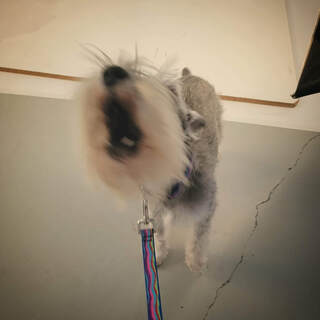 Rainey also had a photo shoot with Target this week. This was her saying she had arrived! Rainey also had a photo shoot with Target this week. This was her saying she had arrived!
We took Friday off from fitness because I wanted to monitor Rainey for any signs of discomfort from the added obstacles in class Thursday night. Thankfully, there were none. That is a very important reminder – you must ALWAYS be assessing and reassessing your dog. Honestly, this goes for normal activity and when your dog is recovering or returning to sport. As your dog’s advocate and handler, you should know their normal and be able to recognize when something is off. Whether their pep isn’t as high or their gait is off. It is up to you to stand up for them and say no we cannot do this activity today.
Next week Rainey will move up to 10 inches for a jump height. I will add more speed to my running and be less of a helicopter handler for her. Then the week after, 8-1/2 weeks post-surgery, she will return to full jump height. I will watch her closely for mistakes and weaknesses. We will reassess our plan based on her performance. Then my hope is at nearly 11 weeks post-op, 3 weeks after jumping full height, she will compete in a UKI Agility Trial. She will then be reassessed for weakness, pain, or discomfort, and I will adjust accordingly. If things go as planned, she will be considered to be released to normal lifestyle. I will keep up her conditioning at least 4 days per week as I continue to improve on her muscle and power. Seeing the light at the end of the tunnel is a great thing. Rainey has exceeded my expectations in her return to function. Alongside her is her sister and her 2 standard schnauzer house mates. As I have been working Rainey, I have also been working them. Aurora, her sister, also competes in agility, and through the last 7 weeks I have seen Aurora’s speed and confidence improve as her strength improves. I am excited to see where this takes us! Day 42 to 48 – Progress to Power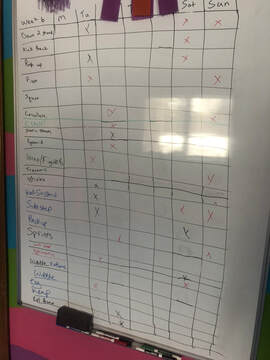 Week 6 Exercise Board Week 6 Exercise Board
Everyone can see how far Rainey has come in the last 7 weeks. She is stronger, she is more powerful, and she is faster. As we continue our recovery journey, which will soon turn to a fitness journey, I continue to work on perfecting her exercises, looking for the square sit or down, looking for the pop up and down, seeing if she can hold her form when challenged on different equipment. And through it all, she continues to take these escalations and ask me what else do I have for her?! This week I did just that. We worked on some techniques, but then I threw in things to complicate matter to see if she could physically and mentally handle them. We also worked a lot on shaping behaviors. Rainey is becoming very good at a front feet on floor pivot, but still trying to understand shaping a front feet on disc pivot. We also spent time shaping a paw shake. Hopefully we can develop this into an adorable trick and fitness exercise in the near future!
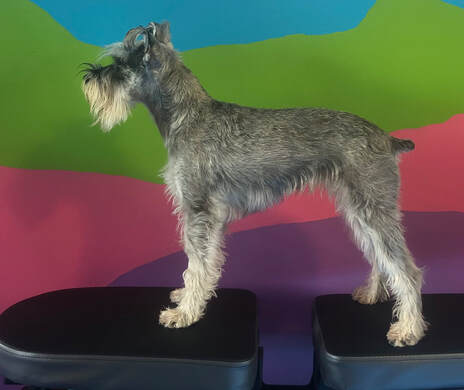 Rainey Week 7 Stack Rainey Week 7 Stack
Sit to Down to Sit – a few weeks ago I introduced this exercise to readers. In the previous video Rainey was doing a walk to down and a walk to sit. You will see in todays video, as her core strength has improved, she is able to pop into a down and does very minimal walking to a sit. She keeps her back end solidly planted on the ground.
Lateral Side Step – again, this exercise was introduced a few weeks ago, but I wanted to illustrate Rainey’s improved strength in completing it. She keeps her back feet very solidly planted, and is now able to step off with both front feet lateral and back on with OUT moving her back feet and keeping her back straight! I can only imagine the amount of core strength and engagement this takes! Cavaletti Figure 8 – we took Figure-8’s and cavaletti’s another step further today by combining them, making an exercise for spinal flexion and body awareness. Once Rainey had the hang of the low bars, I increased complexity by angling the bars. My other dogs are able to perform cavaletti’s and Figure-8’s without a treat in their face. Rainey, on the other hand, has not mastered that yet. Rocking Sit to Stand on Wobble Board – this made this exercise a literal rocking sit to stand! This exercise on the flat focuses on developing power from the rear. When you add this level of complexity, it makes it more about stabilization with a little bit of power. The reason it is good to mix things up is because you do not want the muscles to get use to a specific way of doing things. If you have ever weight lifted or ran, you know that after a while your body reaches a plateau where it is in a steady state and cannot get any further benefit from that work out. The same things can happen in dog. You don’t want to keep doing the same exercise week after week without any variation. You need to master it, yes, but once you do, go back to the original once a week or so, and make variations of it the other days. By performing this variant, it prepares Rainey’s body for the unexpected. If you have ever watched a dog run agility, especially a dog who lacks self-preservation, you know some pretty crazy things can happen. They can fall off the dogwalk or A frame, they can lose traction turning, they can decide to turn the other way quickly which twists the lower limbs, etc. So, it is good for their receptors to learn to react in a calm controlled environment when stimulated differently. Maybe when they do something silly on the field or in the yard it won’t hurt them so badly or at all. Back Up to a FitBone Up a Ramp – this week I decide to increase the complexity of Rainey’s back up even more. I had her back up a very minimal incline to place her feet on her FitBone. She did great! It was a learning curve for her, but overall, she figured it out. To critique this exercise, I would not want her to hyperextend her back and elbows like she did. We only performed a few repetitions; therefore, I am not overly concerned, but I wasn’t aware it was so severe until I watched the video. Ideally, I wouldn’t want to see that level of extension in an exercise. A stretch post-exercise, yes, but not during one. To remedy this, I would place my reward further forward Diagonal Leg Lift and Core Assessment – next is assessing Rainey’s strength and core. When lifting her right hind and left front, Rainey waivered slightly. I’m fairly certain this was due to her wanting to lick my hand and a little slipping on the Klimb. The left hind and right front lift she did not waiver at all. Both lifts, her core was extremely strong and engaged. Looking at Rainey from a stacked side profile she is looking good! Not to mention, she is getting fabulous at self-stacking for photos! Next week I will give an update about her shoulder muscle building and compare photos since it will have been a few weeks. As a reminder, what you see today is the result of what you did 2 weeks ago!
As I continue to increase the complexity of Rainey’s exercises, she continues to build strength and power. I still intend to expand on the Assisi Loop, Tui-na massage, and a more in-depth lesson on anatomy and why things matter or why we recommend what we do for our sport dogs. But for toward, this is short and I am proud of myself for actually doing it! It has been a long week, filled with lots of downs, but hopefully this coming week is better!
The road to recovery is long, and sometimes there are setbacks, but the time it takes to get there will always be worth it! Take care and may the Qi flow freely for you! Dr. Shantel Julius, DVM, CCRP, CVA, fCoAC, CVSMT, CVFT, CVTP, CVCH, CTCVMP References: References: Millis, D., Levine, D. Canine Rehabilitation and Physical Therapy, 2nd Edition. Elsevier. 2014.
0 Comments
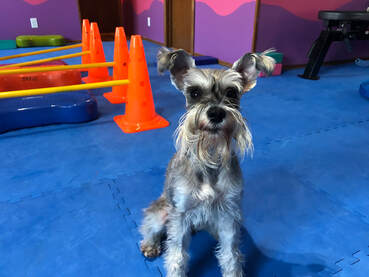 Rainey ready to rock! Rainey ready to rock!
Today is day 41 since Rainey’s abdominal surgery. Today is all the day she was supposed to delivery the puppies. It’s a bittersweet day for me. On one hand, I am incredibly grateful that she is here and doing so amazingly well, but on the other hand I try not to think about the coulda, woulda, shoulda beens. Life is complicated enough without dwelling on those daydreams. Regardless, the loss of a massive dream that I spent a lot of energy, finances, and time on needs to be mourned. Today I told myself will be the last day I dwell on it. After that, onward, my friend!
This week I continued to add complexity to Rainey’s exercises, and I decided to start grouping her exercises into a more rationale breakdown. Instead of randomly picking exercises to do, I looked at my list, and I picked exercises for specific body parts on specific days. Tuesday and Sunday were primarily for her rear end and core; Wednesday was proprioception and shoulders; Thursday was agility class; Friday whole body; Saturday shoulders and core; and Sunday basically whole body, but heavy on rear end. Having body part days helps keep me from over working a certain body part. Having the chart on the whiteboard helps me from performing the same exercise too many days in a row. Below I will go through the new exercises Rainey had this week, as well as their importance for her. 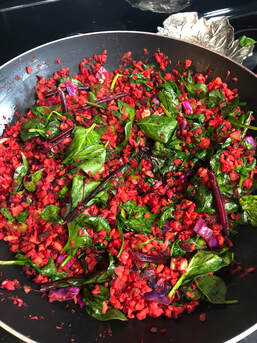 Rainey's veggie mix with sweet potato Rainey's veggie mix with sweet potato
Now I want to discuss Rainey’s diet. There are a lot of ways to formulate a diet. There are wrong ways, right ways, and just to get by ways. The major myth in formulating a homemade or raw diet is that they are completely balanced without a vitamin/mineral supplement. This is not true. Even if you are feeding an 80/10/10 raw diet, you rotate all the things all the time, or your dog is eating exactly what you’re eating daily, it still needs some form of vitamin/mineral supplementation. How I learned to formulate diets for pets was from Chi University. We were taught to pick ingredients using TCVM principles, and break ingredients into percentages correlating to ounces. I will not get into the nitty gritty ways of balancing a diet, but I will say I use BalanceIT and their supplements when I formulate diets for pets. It is a complex process, and if you would like to feed your dog a whole food or raw diet, I would highly suggest contacting someone with experience doing such. There are all sorts of individuals who formulate diets for pets, the most ideal being a board-certified nutritionist. Actually, what is the most ideal is a board-certified nutritionist who also uses ingredients based on TCVM principles. There are websites that offer homemade diet formulation, and they are typically ran by human nutritionists who have training in animal nutrition. Today we are going to focus on the TCVM way to formulate a diet and what ingredients Rainey is eating and why. I will not focus on how much of things, as I do not want someone going rouge formulating a diet for their pet.
Rainey is a hot dog. When you touch her, she is warm, when you work her, she is spirited. She just runs hot. Therefore, based on the knowledge you have gained over the last few weeks you should know that Rainey needs Cooling foods. I also like to have in my healthy sport dogs diet a nice base of Blood Tonics to keep their tendons/ligaments moist to prevent injury, ingredients to nourish Qi so they do not become deficient from their exercise/work schedule, and ingredients to prevent Phlegm. Phlegm is what happens when body fluids slow down. It is the side effect of Spleen, Lung, Triple Heater, and Kidney Disharmony, resulting in accumulation of Body Fluids. In general, a healthy, non-processed diet, active lifestyle, and balanced body will prevent Phlegm accumulation. 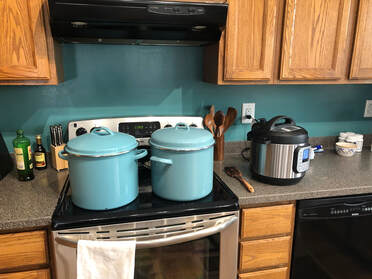 I use 2 stock pots & 2 InstaPots for meat & carbs I use 2 stock pots & 2 InstaPots for meat & carbs
Phlegm is a thick, damp, turbid material. In TCVM there are two types of Phlegm – Substantial and Non-substantial Phlegm. Substantial Phlegm can be described as ‘thick, sticky, condensed’ or as ‘the Phlegm having form’. This is what we think of with sputum, mucous, and greasy, lipid, or caseous material. It is also focal masses or tumors, which can be benign or malignant. Pathogens can be associated with substantial Phlegm as well – Heat, Cold, Damp, and/or Spleen Qi Deficiency. However, it is most often caused by Excessive Heat or Excess Damp. When Phlegm is caused by Heat (Heat Phlegm) the Heat from the body cooks the Body Fluids, resulting in them accumulating and congealing, forming tumors. Damp Phlegm (Phlegm resulting from Dampness) is caused from the accumulation of large amounts of sticky, Damp Body Fluids. Damp Phlegm and Heat Phlegm are the two most common forms of Phlegm accumulation seen in veterinary medicine.
Non-substantial Phlegm is something you cannot touch. It is considered something that causes a strange disease, and a the saying goes “Where there is something strange, there must be Phlegm”. Phlegm of this form may be diffuse, disseminated cryptic, or within the Channels. It can obstruct Channels, preventing the free flow of Qi, and resulting in mania or depression (‘Phlegm misting the Mind’ by blocking the Heart) or seizures (stagnation in the Liver Channel leading to Internal Wind). Diseases due to Phlegm are various, but include Retention of Phlegm in the Lung, leading to cough and asthma; Obstructed Phlegm in the Channels, leading to subcutaneous masses or suppurative inflammation of the deep tissues; or Phlegm affecting the Heart, resulting in Shen or mental disorders, loss of consciousness, or even coma. 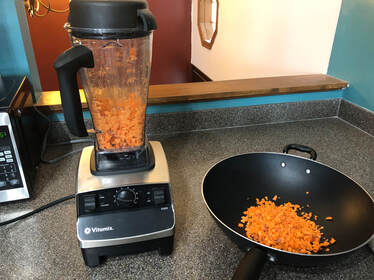 Veggies & sweet potato are chopped & diced using the VitaMix prior to sautéing Veggies & sweet potato are chopped & diced using the VitaMix prior to sautéing
You can see why ingredients that treat Phlegm and keep Body Fluids happy and flowing would be important – to prevent cancer. If you’re too cold, your Body Fluids slow down and accumulate with the Dampness, forming tumors. If you’re too hot, your Body Fluids burn up and congeal forming tumors. Therefore, you must be just right. There is so much to consider when ‘Balancing’ an animal. So many reasons for a diet ingredient or an acupuncture point or an herbal medicine formulation. When an already sick animal presents, with a laundry list of maladies the most important must be chosen. But – the most important for whom? The owner? The doctor? In my practice, I try to pick what I feel is the most life threatening to the pet, while also paying close attention to what may be affecting the quality of life of the owner. As you can imagine, attempting to undue years of Excess Heat, Excess Cold, Damp Accumulation, Phlegm Production, etc is a lofty goal. But it can be done. It just takes time. As I tell my clients whose pet has multiple health concerns, it is like pealing back the layer of an onion. We will address one thing first, but as we balance that section of your pet a new issue you did not know existed may show itself. The process of balancing an individual is not easy and it takes times and patience from everyone involved. This why even if you THINK your pet is healthy, it would be best to get them assessed early in their lifetime, and ideally 3-4 times a year. As the seasons change, so does out balance. Some are more stable than others, and may only need re-assessment 1-2 times a year. However, the longer a patient goes without fixing a benign problem, the likelihood increases that it becomes a unfavorable problem. How does a practitioner find these problems if they do not exist in the physical state? By assessing everything we have previously discussed – tongue, pulse, preferences, specific acupoints, and temperature of the patient. There is so much that can be found in these simple things that can aid a skilled TCVM practitioner in catching illness early.
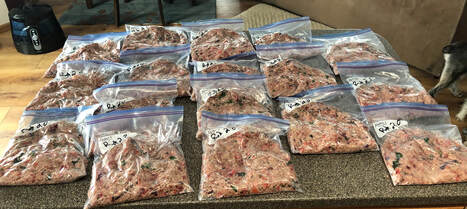 The Final Product The Final Product
Now that we have seemingly gone off topic, what is in Rainey’s current diet? The answer is, a variety of things. I have also previously discussed Rainey’s supplements, noting that she receives medicinal mushrooms, probiotics, omega 3’s, and BalanceIT Canine multivitamin/mineral supplement. All of my dogs receive a variety of antioxidant, free radical scavengers to try to keep them as healthy as possible, but as I have previously stated, sometimes you can’t beat genetics. To keep Rainey the healthiest she can be, the following is what she is currently on, describing the ingredients TCVM energetics and why it was chosen:
*Beef - Sweet, Neutral -Tonify Blood, Qi, and Yin; moisten dryness; strengthen bones and sinews; relieve pain; limb weakness; fatigue; *Turkey – Sweet, Neutral to Cool – Tonify Qi and Yin; soften the hardness; indicated for Kidney/Liver Yin Deficiency; *Cod - Sweet, Cold - Tonify Blood and Yin, clear Heat; general Yin Deficiency; promote digestion, Stagnation, Vitamin D source; *Chicken Egg, whole - Sweet, Neutral - Tonify Blood, Qi, Jing, and Yin, calm Shen; clear Heat; *Sweet Potato - Sweet, neutral - Tonify Blood, Yang, and Qi, Blood Stagnation, resolve Toxins, low glycemic index, rich in Vitamin A *Kidney Bean - Sweet, Neutral – Tonify Blood, Yin, Jing and Qi; Blood Stasis; clear Heat; benefit the Kidney; *Black Bean - Sweet, Neutral - Tonify Blood, Jing, and Yin; relieve pain; brighten eyes; *Brown Rice – Sweet, Cool – Clear Heat; weakness; tonify Blood, Qi, and Yin; quench thirst; *Millet – Sweet, Salty – Relieve thirst; tonify Yin; clear Heat; resolve Toxins; it actually has anti-fungal properties that aid in treating Candida albicans overgrowth; *Quinoa - Sweet, Sour, Neutral - Tonify Qi, and Yin; strengthen whole body; *Spinach - Sweet, Cool - Moisten Dryness, Soothe Liver, Clear Liver Heat; nourishes Blood; strengthens all organs *Celery - Pungent, Sweet, Cool - Send down middle Qi; clear Heat; agitation due to Liver Heat; calm Stomach Fire; *Rainbow carrot - Sweet, Neutral - Tonify Liver Blood, Soothe Liver Qi, resolve toxins; moisten dryness; benefit the eyes *Turnip - Pungent, Sweet, Neutral – Drain Damp; transform Phlegm; engender Body Fluids; Blood Stagnation; tonify Blood, Qi, and Yin; circulate Blood; assist in dry mouth; aid in thirst; resolve toxins; clear Heat; *Beet - Sweet, Neutral - Tonify Blood; moisten intestines; clear Heat; detoxify; cool Blood; irritability; calm Shen; *Red Cabbage – Sweet, Pungent, Neutral – moisten intestines; mental depression; circulate Qi; clear Heat; *Daikon Radish – Pungent, Sweet, Cool – transform Phlegm; moisten Lungs. Day 35 to 41 – Pushing the Physical Limits: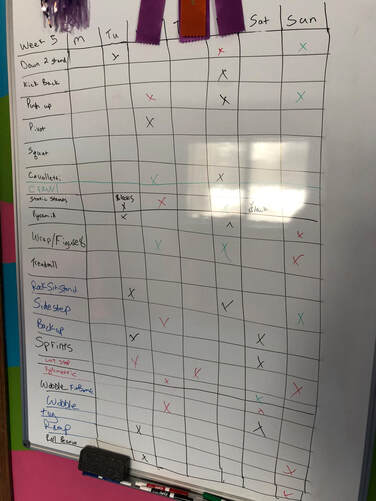
Rainey continues to make excellent progress in her healing. If I was inpatient, I’m fairly certain she would like to return to competing at full height, but that’s not on my agenda. I want Rainey to return stronger than when she left. Like I said last week, I have slacked in the last year with maintaining my dogs’ fitness. Rainey has a natural musculature physique, and the absence didn’t hit her as hard as her sister. But it was still noticeable. In previous years Rainey has had significant musculature definition. She always was mistaken for a boy (insert facepalm emoji). Whereas Aurora as a very feminine physique. This goes back to our discussion on being a Yin or Yang animal, and correlates some with their excess hot or cold needs. Anyway, in 2019 I had all the dogs in peak physical performance. I had started out by exercising them 4-5 days a week, with 1-2 rest days and 1 agility day. They got to the status I wanted, and I backed off to 1-2 times a week, and honestly, sometimes less. Given that they were in phenomenal shape, they were able to maintain this peak physical fitness while competing frequently and minimal fitness exercises. Until the pandemic hit. Looking at my videos of them, it’s really crazy to think 2020 was just a wash for us. It’s like the year that didn’t happen. Or maybe an extended vacation where we all just ate way too much and exercised way too little, the girls and I combined. Now I find myself 5 weeks into an intense fitness routine with the dogs, and I am getting bored. Yeah, that’s right…I’m bored with our routine. Do you see that list? There are 22 exercises on that list! 22!!! And I am bored. I circulate through each and every one of them throughout the 6 days we do fitness. I am finding that they are no longer a challenge to the dogs. Last week I introduced you to the Pyramid. It’s one of my most favorite exercises. When I restarted fitness with the dogs, the standards couldn’t jump from yellow peanut to blue peanut. They’d either fall or just thrust themselves over the top, landing on their belly. The minis were alright. Now, the standards are Mexican jumping beans, springing from yellow peanut to the blue like it ain’t no thing! And I am running out of ideas on how to challenge them! Ok, that’s not 100% true. I am running out of whiteboard space to write my ideas. But – here’s the deal – in human and canine (or equine) fitness once an exercise becomes easy, we make it more complex. We can take a boring, use to be difficult static stand on the flat or FitBone and perform it on varying sized yoga blocks or a really unstable piece of equipment. We can do those down to stands on a peanut or a low-level ramp. We can increase the height of the thing we back up to. We can add resistance bands. We can do a lot with our foundation exercises! Imagination and physics are your friend! This week I’ll cover some new exercises and some modifications to old exercises. Rainey is getting strong, and I need to keep things fresh and new for her, or she will plateau. And no one likes to plateau!
Crawls – or like I would call this, as to not be confusing, crouching. When most think of crawls, we think of extending the back feet behind the dog in order to push themselves forward. This is how I described this exercise previously, and even within the last 2 months, to owners. However, a much more muscle efficient exercise is having the dog crouch and walk lower. It puts the muscles in a contracted formation, working them a little differently, while forcing the back and core to engage to maintain stability. The idea would be to perform them slowly as to work the muscles to the max capacity.
Cavaletti – this week I added a lot of complexity to the cavaletti. The primary formation I use for caveletti’s, and what most people likely think when they think cavaletti, are bars spaced as far out as the dog is tall in order to produce a lovely even, flowing gait, while increasing proprioception and balance. This week’s version of cavaletti involved balance equipment and the bars were spaced around 14 inches or more apart, enough to get the FitBone’s in between (also, do you know understand why I have so many FitBones?). The objective of this exercise was to get her to slow down and think about her balance and where she was placing her feet. It took her proprioceptive reflexes to the next level, as well as combined stability work for her joint mechanoreceptors as she navigated the rough terrain. What you cannot see from the video is every other FitBone had a different inflation level. There were 2 FitBones that were extremely over inflated and rocked. With this exercise I was not concerned with gait patterning, therefore her slight hopping was fine. Static Stand on an Unsteady Thing – next up was Rainey performing a static stand on an even more unsteady object. Up to this point she had performed this on 2 over inflated mini FitBones. Due to their nature, the FitBones rocked cranial-caudal (forward backward). The object this week is a Flexiness Twindisc that is over inflated, therefore it rocks all directions. I made sure Rainey was standing relatively square, not tucking her hind legs underneath her, and then asked for a variety of motions. It was definitely more difficult for her than the FitBones! Goal achieved!
Plyometric Jumps – one of my favorite exercises to do with a very fit dog are plyometric jumps. The purpose of this exercise is to get the dog sitting as close to an object as possible, and then have them jump straight up unto said object without pulling themselves with their front legs. It is all about teaching power from the rear end push off. You can see how the Rock Back Sit to Stand has set her up for success for this exercise. In 2019, Rainey was able to sit on a stabilized wobble board and jump nearly as high as my chest from a sit. That video snippet is included after current videos. Today we didn’t go quite as excessive. From the video, you can see I used a hand touch to get her close to the table, and then sat her squarely in front of it. Then I lured her to jump onto the table. I started with a single Klimb, and with continued repetitions, added 2 Klimbs on top of the initial Klimb. When the 3 Klimbs were stacked on each other I did add the wobble board as a ramp for her to get down. You will also see she completed a crouch crawl on her way back to starting position. I did this to try to limit the impact of her front legs jumping off of the 3 Klimbs. It’s important to note what repetitions and sets are. Repetitions are the number of times you repeat the exercise in a row, and sets are the number of repetitions you do. For example, I typically perform 5 repetitions of an exercise in a row, release dog, and repeat 1-2 more sets of 5 repetitions. Again, monitoring for fatigue and loss of control that would indicate the dog has exhausted those muscle sets and that exercise is no longer useful at this exact minute, and a break is needed.
Back Up to a FitBone – this is Rainey’s original back up to a thing exercise. When she started her recovery process, I used a low object (the FitPaws ramp) for her to back up to. Now that her core and back strength are significantly improved, as well as her increased body awareness, I can increase the complexity for her by raising the height of the object and increasing the distance to the object. I want you to appreciate in the video that when she gets into position, her back is straight, her neck is neutral, and no part of her body is hyperextended or flexed. Teaching the dog to do this is as simple as choosing the correct reward location and being fast with your reward placement. I don’t always lure my fitness exercises. I really enjoy shape training my dogs. This week I actually started shape training their front feet on disc and back feet on disc pivots. So far, it’s looking good! Static Stand on Yoga Blocks – this is an exercise I have been working on for about a year with the dogs. It’s extremely difficult to perform and requires a tremendous amount of coordination and core strength. I have 4 yoga blocks, all different heights. The dog stands with each foot on a different block, and you perform slow varying head motions, sometimes tapping on hips/shoulders, to allow dog to engage their joint and muscle stabilizers differently. The height difference is a great challenge – the dog must reach with one front leg, but the other front leg is crouched (I feel like this is my word of the week) slightly. The same in the back, but no leg is on the same height block. It is a difficult exercise, and I do not recommend you try it unless your dog is cleared of all joint and muscle injuries. As you can see in the majority of the videos, when I perform exercises with my dogs, I am CONSTANTLY checking in on them. I am feeling the muscles I want or think should be engaged, I am feeling their back to make sure it is straight, and I am constantly checking their stability. Frequently assessment DURING the 10-30 second exercise is KEY to performing it accurately and injury free!
Wobble Board FitBone – this we saw last week, I believe. It is truly on of my favorite exercises simply due to its complexity and full body work out. It is an excellent shoulder stabilization exercises, but it also requires significant core engagement. This week I worked on Rainey’s form. Her front legs were more under her, with less hyperextended carpi (front wrist). She was able to hold stabilization better and longer. Figure 8’s – a simple, yet complex exercise. Figure 8’s not only engage the spine for lateral flexion, but it helps train the joints for lateral motion and increased stabilization on turns. Throughout this exercise, I varied between slow and fast walk and increased/decreased the distance between cones. The variation in complexity allowed for her to respond and react. If we correlate this to agility, it is the foundation steps to training her muscles and joints to stabilize for sharp turns after jumps. Peanut Balance Walking – ok, I’ll admit, I think this exercise is adorable and kind of reminds of a monkey. My ultimate goal here is to have the dog be able to engage their core so well that they can stabilize and walk the peanut without me guiding it. This exercise helps with body awareness, core strength, back end limb strength, and back strength. Important to note, you want the dog to keep a straight spine with a neutral neck. If I was able, I would be reaching down to feel her core and back legs to make sure she is properly engaging. Due to it’s complexity, this exercise is kept extremely brief and only repeated once. There you have it – Rainey’s newest exercises for the week. She is coming along nicely! This past week she jumped 6 inches in class and was able to perform the dogwalk (thankfully without falling off). She is running fast and happy! Her overarousal and clinginess was already declining. Hopefully with more exposure she will continue to return to a level headed agility speed demon! 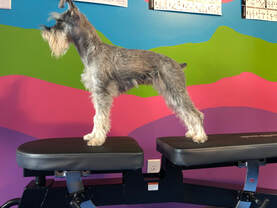
The last section of the video demonstrates Rainey’s diagonal leg lifts. The largest issue I have with performing these on her is she constantly wants to lick my face or hand, therefore making her look weaker than she is, as she wobbles to chase my hand or face. Despite this, I am happy to report that her stability and core strength and engagement is extremely strong! When we look at her free stack, her back is flat, her back legs are extended in a normal stacked position, her front legs appropriately underneath her, and with her new haircut, you can appreciate how tiny and tight her waist is becoming.
This week I will continue to increase the complexity of Rainey’s exercises, while building her strength and making her as agile as possible. She is such a willing and able partner that this process continues to be a joy! I still intend to expand on the Assisi Loop, Tui-na massage, and a more in-depth lesson on anatomy and why things matter or why we recommend what we do for our sport dogs. The road to recovery is long, and sometimes there are setbacks, but the time it takes to get there will always be worth it! Take care and may the Qi flow freely for you! Dr. Shantel Julius, DVM, CCRP, CVA, fCoAC, CVSMT, CVFT, CVTP, CVCH, CTCVMP References: References: Xie, H., Preast, V. Xie’s Chinese Veterinary Herbology, 1st Edition. Wiley-Blackwell, 2010. Fowler, M,. Xie, H. Integrative and Traditional Chinese Veterinary Medicine Food Therapy Small Animal and Equine, 1st Edition. Chi University Press. 2020. Millis, D., Levine, D. Canine Rehabilitation and Physical Therapy, 2nd Edition. Elsevier. 2014.
Today marks day 34 post-operative abdominal surgery for Rainey, making tomorrow week 5! She continues to do great, and returned to agility class this week, where she only jumped (speed bump) 4 inches and did tunnels. No contacts or weaves. She was fast, happy and full of energy! My goal with taking her to class was to see where she was at. It will be a few more weeks before she’s allowed on contacts and the weave poles. Rainey has no self-preservation skills, and right now with her excitement level and state of body awareness that is a very dangerous thing. Plus, I’d like a little more healing on her linea and back/core strength before she jumps full height, bends her body (weaves), and runs up/down high, sometimes narrow things (dogwalk, teeter, and A frame). 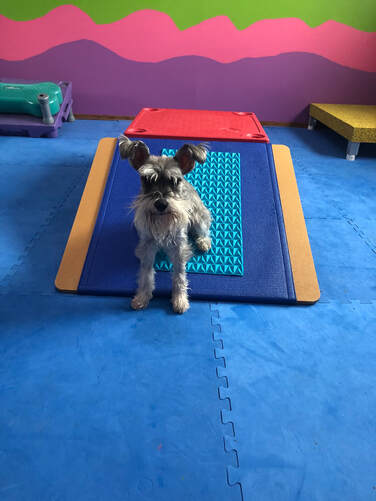 Rainey ready to work! Rainey ready to work!
This week Rainey was groomed. For her, that is a combination of rolling her coat and hand stripping it, along with clippers and scissoring for certain areas. In this week’s video you will notice the change in her appearance mid-week. She appears slightly thin coated. What’s nice about the hair cut is you can now fully see her muscles. I know my focus on her recovery has been about her core and back, but this week I started to notice that I need to strengthen her shoulders and front end. My noticing this was not due to anything she did, but rather with her hair cut I was able to better assess her overall musculature. I will be honest, 2020 was not kind to me in regards to having time for my dogs, myself, or my family. It was a very busy year work wise, and this year is looking the same. Because of this, and the cancellation of all major events, I severely slacked on the dogs conditioning and fitness. They returned to agility class weekly around late June, and had only a few one-day trials in the fall. Running in agility class is not an appropriate fitness regime. In the last year, we became weekend warriors, except our weekend was Thursday nights. I was so busy with work and moving, that without goals in my mind, keeping my dogs fit wasn’t a forethought. And it really needed to be. Aside from Rainey, I have her littermate Aurora, 12.5-year-old rescue female standard schnauzer Jade, and 10-year-old rescue standard schnauzer Sterling. Each of these dogs have their own needs fitness wise, and each has to have a plan tailored to their abilities and needs. And sometimes, it seems daunting to work with all 4 dogs. However, it only takes about 30 minutes a day to do all of their fitness, which includes each dog and the set up/tear down time. Each of the dogs have suffered from not working on their fitness in the last year. Aurora, who was spayed December 2019, use to have a very strong core, but now it is weak. After her spay, I did a slow 8 weeks rebuild with her. But then the world shut down, and so did my ambition. Fast forward to today, and her physical weakness is illustrated in her dislike for jumping 12 inches. She chooses to run around the jumps. But at 8 inches, she is all willing! I assessed Aurora the other day, and sure enough her core is weaker than it ever has been. This is most likely due to the lack of keeping up with her fitness after her spay. She went in strong, and rebuilt strong, but then it slowly faded as she didn’t receive more than 10 targeted fitness sessions from February 2020 to January 2021. Since I have been determined to not let Rainey’s body become weak, the other dogs have all benefited. In just 3 weeks, I am noticing that Aurora is more musculature and leaner than she has been in previous months. Jade’s hind end muscles (the first things to go in older dogs) are looking larger and more fulfilled. Sterling is gaining the ability to jump on furniture more easily, working on his hind end strength. All it takes is a small amount of time each day to achieve this. I know it’s daunting, but just 5 to 10 minutes a day 3-5 days a week will benefit your dog so much! If I can find the time, so can you! I mean, I do have to get up at 4:30 am during the week, but it’s worth it!
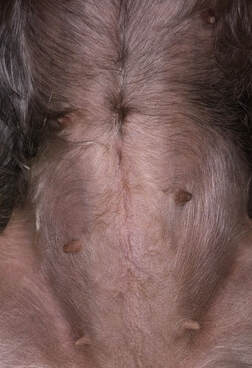 Rainey's incision, day 34 post-op Rainey's incision, day 34 post-op
Rainey’s incision continues to heal very well. The sutures under the skin are getting softer by the day, but the cranial aspect (closest to her belly button) is slightly irritated. This is the location that all the closure knots are located, therefore the largest quantity of suture. Rainey’s core is rock hard when she is challenged by way of diagonal leg lifts. She will waver slightly on the right hind, but overall, she is looking fabulous! Aside from the other modalities and treatments discussed, I attribute the healing of Rainey’s incision to laser therapy. Laser therapy, also known as Low Level Light Therapy, Cold Laser, Soft Laser, Laser Phototherapy, and more recently photobiomodulation, is, per the National Center for Biotechnology Information defined as “a form of light therapy that utilizes non-ionizing forms of light sources, including lasers, LEDs, and broadband light, in the visible and infrared spectrum. It is a nonthermal process involving endogenous chromophores eliciting photophysical (ie linear and nonlinear) and photchemical events at various biological scales. This process results in beneficial therapeutic outcomes including, but not limited to, the alleviation of pain or inflammation, immunomodulation, and promotion of wound healing and tissue regeneration.”
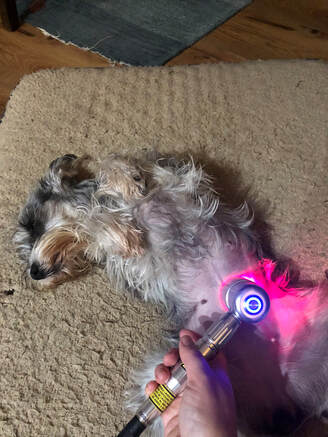 Rainey receiving laser therapy Rainey receiving laser therapy
Laser therapy provides painless and non-invasive safe treatment with controlled amounts of laser light to modulate natural biological processes in order to produce beneficial clinical effects. The positive effects of laser therapy include pain relief; resolving chronic and acute inflammation; reducing edema; healing and regenerating nerve tissue; promoting wound healing and tissue repair; and modulating an immune response. Laser therapy should not warm tissues more than 1-2oC and it is not considered a thermal modality. There are different levels of laser therapy machines, but the most commonly used range from 3b to Class IV. Laser therapy works on 4 levels. At the primary level, laser therapy is dependent on the actual interaction between light and tissue. These include the absorption of photons by photoreceptive molecules (chromophores) at the sub-cellular level. These interactions cause a photochemical and photophysical reaction that leads to a cascade of biological processes. On the secondary level, there is modulation of ATP (the molecule that carries energy within cells) production, which is dose dependent, as well as Nitric Oxide release and formation of Reactive Oxygen Species (ROS). On the tertiary level, the products of the secondary mechanisms then produce effects including gene transcription, inter-cellular signaling, and vasodilation. Finally, on a quaternary level, the vasodilation increases cellular perfusion, which allows improved oxygenation and an influx of macrophages, neutrophils, and lymphocytes to affected areas that are undergoing repair and/or infection. It also brings blood supply or re-vascularization and proliferation of cells that aid in healing. Improved profusion or blood supply will also facilitate the removal of inflammatory cells, fluids, and debris (lymphatic drainage) more efficiently. All in all, laser therapy improves wound healing, reduces inflammation, promotes cellular reproduction, stimulates nerve regeneration, and provides pain relief.
The treatment protocol for laser therapy is variable depending on the injury and chronicity. In Rainey’s case, she has been lasered every 3 days since surgery to aid in increasing the rate of healing. I am also experimenting with whether laser therapy will increase the rate of suture dissolution. According the manufacturer, the suture used will take approximately 200 days to dissolve. I would like it gone closer to 16 weeks, which is 112 days. There is no data on whether laser therapy will increase the rate at which sutures dissolve, but based on the softness of Rainey’s sutures, it seems to be helping. Even if it doesn’t help dissolve them faster, performing laser therapy every 3 days for 16 weeks will provide a much healthier, stronger linea alba, especially in combination with the use of the Assisi Loop and Tendon/Ligament Formula herbal medicine.
Day 28 to 34 – Building Precision & Strength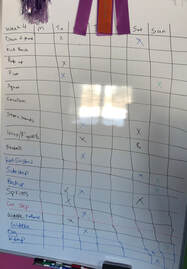 Exercise board for week 4, 2 full rest days Exercise board for week 4, 2 full rest days
As I stated above, Rainey has been showing remarkable progress in her fitness. This week I decided to push her past her comfort level and try new to use exercises. I continued to expand on her quantity of repetitions and exercises, while watching her for fatigue. I also increased the complexity of some of her exercises, whether with adding stability equipment or higher angles for reaching. While making these changes, I continued to closely monitor her form. If her form suffered, whether with increased complexity or increased repetitions, I did not push her further. I stopped. This illustrates that she is tired and it has been enough. If you push a dog through this you will cause injury. In rehab the saying is ‘Quality over Quantity’. It is extremely important for handlers/owners to understand that.
With that in mind, lets look at the video….the first segment is a down to stand but on a peanut. A peanut should be fully inflated and firm. This exercise was made more difficult due to the shape of the object she was on and the fact that is it unstable. What I noticed during this video is Rainey’s back feet turn out a little more than I’d like. When in a proper down to stand position or stacked stance or square down the back feet should be pointed forward. Seeing this, I know I need to work on her form on the flat (aka ground) before moving to stability equipment.
The next exercise in the video is a pyramid structure made with Klimbs, FitPaws Disc, FitPaws Peanuts, and a Bosu ball. The goal of this exercise is hind end and front-end awareness and strengthening. We start by ascending the pyramid. The goal is for Rainey to maintain a straight back with her weight loading her hind legs. You will notice that I feel her core and her back legs while she is in this position, and I vary the location of the lure (cookie) to engage these body parts. Then you see her jump from the disc to the peanut. Note that she is PUSHING from her rear. She is not pulling herself with her front limbs. I am happy to see this appears effortless for her! We repeat the previous exercise, but this time she is more stretched out, elongating her back. Also, Rainey is beyond enthusiastic for cookies, which can make the precision of fitness training difficult at times. Then again, she jumps effortlessly from the yellow peanut to the blue peanut, which is a greater distance than the previous jump. I am happy with this. The next part of the exercise is to illustrate control on the decline. She now has to move her way downward, while maintaining her hind legs on the peanut above her. This would be very difficult without adequate core and back strength. Think tail over teakettle. She also needs the appropriate strength in for forelimbs to stabilize herself on the peanut below her. The goal of movement for this exercise is also maintaining a straight back and neutral spine. Ideally, Rainey’s head should be lower and nose pointed more towards the floor. Then she moves lower to the Bosu with forelimbs and peanut with hindlimbs. Again, I really would like a more neutral neck in alignment with the rest of the spine. That is handler error, not dog.
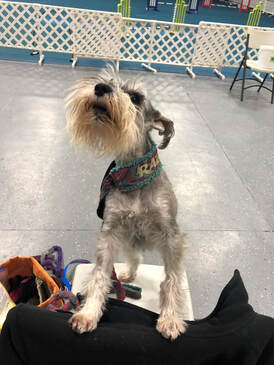 Rainey was EXCITED to be at agility class! Rainey was EXCITED to be at agility class!
Tuesday was all about pushing boundaries with Rainey and seeing how much we have left to make up for. The next exercise shows a Klimb at an angle, with the FitBone resting on the angled legs and a small wobble board in front. This again asks for a straight back, stacked hind legs, and front legs under the dog. This is an exercise that focuses on the shoulder stabilization musculature and it is incredibility difficult. My critiques of our positioning are head too high and forelimbs to far forward. In reality, I should have placed something under the wobble board to stabilize it to allow for better form.
Wobble board balance work was next. This is a full body work out, challenging the body’s stabilization mechanisms. We kept things simple by luring from corner to corner and circles on the board. As you can see from the video, Rainey was lacking confidence on it and chose to crouch. Although this was not the sought behavior, it was still beneficial in its own right. It engaged the musculature in a different manner, challenging the joints differently, and providing a novel input.
Tug as an exercise – yes, that’s a thing. Watch the video of Rainey tugging. What muscle groups do you think she is using/engaging? Pretty much her whole body. Throughout our tug session, I would reach and feel her core and back legs. What you will also notice is what she is standing on. You have likely noticed these mats throughout the last few weeks. They are Flexiness Sensimats. I have 3 different mats with different textures to them. I randomize which one I use each day. Their purpose to provide a novel stimulus increases proprioceptive responses from the paw to the brain. I also like to use them for keeping the dogs straight and square. They also provide a non-slippery surface, because sadly my flooring can be slippery. Originally, I purchased them to aid in novel stimulation for the puppies, that weren’t born. The other thing to observe from this video segment is neck position. I try my best to keep Rainey’s neck in alignment with her spine. This is extremely important for longevity of neck health.
The next exercise was a rock back sit to stand. As I discussed previously, we do not want our dogs pulling themselves up, instead we want them to use their hind end. This exercise if done incorrectly, will teach your dog to pull with their front. The goal of this exercise is for the dog to propel themselves forward with their back end, strengthening their gluteal muscles and quadriceps. To return to a set, the dog must engage their core and to pop back down. What we don’t want is the dog walking themselves forward and backward with their front feet. The back feet should stay stationary during this exercise. Ultimately, the dog will be pushing themselves forward and returning to the sit with power and speed. This was literally the first time in her life Rainey performed this exercise, and I think we did well. Reward position will play into the dogs’ motion, so be careful where your hands are. Also, as with the down to stand, make sure the back feet are pointing forward.
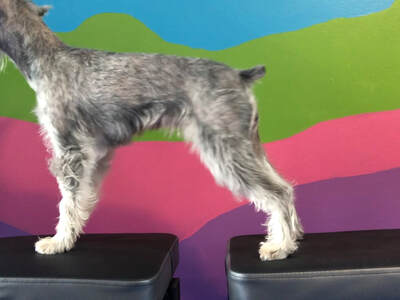 Rainey's topline continues to improve! Rainey's topline continues to improve!
I continued to challenge Rainey this week by working on her precision and slow movements. The next segment in the video shows a mini obstacle course set up with a wobble plank, Klimb, and FitPaws Disc, as well as a Sensimat on the plank. The goal of this exercise was similar to the pyramid set up, but with different heights. The goals of the decline and incline on the plank were to try to go slowly and work on her precision and push off (incline). Rainey does everything at mach speed, hence all the luring vs offering in her fitness exercises!
There were a few more exercises thrown in there, but if I share them all today, I won’t have anything left for next week! We are up to 19 exercises, with different variants able to be performed with many of them. The goal of her fitness is to challenge her, but only when she is ready. At the end of today, I checked her strength with diagonal leg lifts. It’s honestly hard to determine if she has weakness in her right hind or if she simple is too over excited for snacks! But her strength when her left front and right hind are lifted is definitely rock solid, as is her core strength! The last image in the video is a stacked photo of Rainey. Again, getting her to stand still is a difficult task! But she’s looking great! 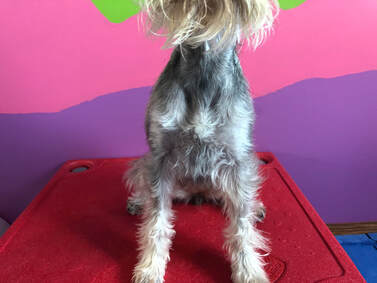 Marker photo for chest progression Marker photo for chest progression
Over the next week we will continue to build her strength and dexterity, regaining her balance and eventually speed. We will go to class this week, at 4 inches and only jumps and tunnels. I am very pleased with her progress, and am exited to get her back to full height! She is a fun little dog who challenges me in every way, but I wouldn’t have it any different! This week was again kept short, as I somehow ran out of time. I hope to write about her diet next week, and continue to expand on any new exercises we perform. I still intend to expand on the Assisi Loop, Tui-na massage, and a more in-depth lesson on anatomy and why things matter or why we recommend what we do for our sport dogs.
The road to recovery is long, and sometimes there are setbacks, but the time it takes to get there will always be worth it! Take care and may the Qi flow freely for you! Dr. Shantel Julius, DVM, CCRP, CVA, fCoAC, CVSMT, CVFT, CVTP, CVCH, CTCVMP References: Millis, D., Levine, D. Canine Rehabilitation and Physical Therapy, 2nd Edition. Elsevier. 2014. Evans, H.E., deLahunta, A. Guide to the Dissection of the Dog, 6th Edition. Saunders. 2004. Jenkins, P. Spectrvet Therapeutic Lasers. 2017 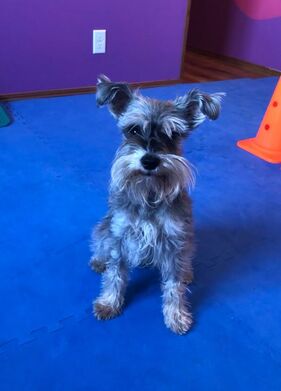 Rainey, because she's cute! Rainey, because she's cute!
We are almost at 1-month post-operative abdominal surgery for Rainey! If we are counting by the weeks, we will be at week 4 tomorrow. To keep things specific, we are at day 27 post-op. Rainey has been doing very, very well! Her spirits are high and she seemingly has her physical status back. This week we played scent work, and she excelled! I attribute Rainey’s seemingly speedy recover to the multi-modal approach to her health, or a whole health approach to her care. This has included her diet, physical fitness, appropriate supplements, appropriate herbal medicines, and her mental stimulation. I have worked hard to engage her and make her feel important and included. Her life was thrown upside down the weekend she got sick, and in one day she went from pregnancy hormones to no hormones. Throughout my entire career I have heard that you should not spay a bitch when she is cycling or during pregnancy, as the affects on her mental state could be devastating. But, did anyone have any data to support this? Or even antidotal data? Or was this just hearsay? I will not lie; I was terrified Rainey would be locked in a constant state of pregnancy or false pregnancy brain, unable to function and too emotionally sensitive to rebound. I was determined to keep her mentally stimulated throughout this process so that she would not become depressed and her mental acuity would suffer. Whether it be my process of inclusion or the fact that trapping a bitch in a state of pregnancy brain isn’t really a thing, Rainey is exceeding expectations!
Whenever a patient has a surgery that involves cutting of a tendon or ligament or a sport dog with a strain, the herbal formulation I reach for is Tendon/Ligament Formula by Jing Tang Herbal. Its Chinese name is Zhuang Jin Jian Fang and it is a modified Bu Gan Qiang Jin San. Tendon/Ligament Formula nourishes Liver Yin and Blood, as well as strengthens tendons and ligaments. For centuries, Chinese herbal medicines have been used to treat martial arts injuries. These herbals can also be used to strengthen tendons and ligaments, which is the reason I recommend once a year an active performance dog go on Tendon/Ligament Formula. The micro abrasions to the tendon and ligaments can be nourished, and potentially prevent major injury. In TCVM, by supplying and nourishing the tendon and ligaments with Blood and Yin, the Liver dominates and controls them. When there is weakness or poor growth of tendons and ligaments, there is usually Liver Yin/Blood Deficiency. Therefore, the key to treating tendon and ligaments injuries is to nourish Liver Yin and Liver Blood. In horses, there is ultrasonic evidence of complete healing of a tendon injury after just 3 months of administration of Tendon/Ligament Formula. You may be asking yourself ‘if this formulation is so amazing, why hasn’t it made it’s way to mainstream medicine?’ That is an excellent question! The answer is because mainstream medicine wants evidence-based medicine, and evidence-based medicine involves studies. The purpose of Chi Universities Master in TCVM Program is aid in providing this evidence-based medicine in hopes of bringing the benefits of TCVM to Western Medicine, making it a more accepted practice for our patients.
The ingredients and actions of Tendon/Ligament Formula are as follows: *White mulberry – Soothes limbs *Epimedium – Nourishes Kidney Yang and Yin *Dang Quai (Angelica Sinensis) – Nourishes Blood *Chinese Peony – Nourishes Blood and Yin; soothes Liver Yang *Cyathula – Strengthens the Kidney and benefits the knees *Sichuan Lovage – Moves Blood, resolves Stagnation *Lycium – Nourishes Liver Yin and Blood *Cinnamomum Aromaticum – Activates the Channels and Limbs *Asiatic Dogwood – Nourishes Liver Yin *Rehmannia (Shu Di Huang) – Nourishes Blood and Yin *Psoralea – Nourishes Kidney Yang and Yin *Eleutherococcus Sessiliflorus – Strengthens ligaments and tendons This week I am running low on mental power, and would like to expand on Rainey’s diet, but I am going to wait until I have more time and brain power. Therefore – onto her fitness! This week I confused myself by over thinking, was she on week 3 or week 4? I couldn’t decide, so I called it week 3 to 4. This week Rainey had 3 full rest days – Monday, Wednesday, and Sunday. Despite these appearing to be perfectly placed, they are actually the consequence of my schedule. This week we increased our intensity, and I wanted to see what Rainey could give me, strength wise. Day 21-27 – Regaining Function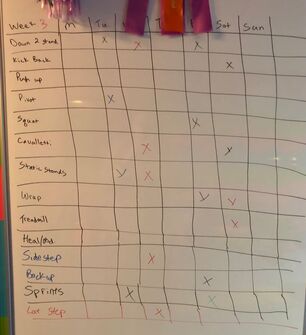 Rainey's exercise schedule for week 3-4 Rainey's exercise schedule for week 3-4
At the start of the week Rainey was assessed with diagonal leg lift to see if she could balance better than last week. The answer was yes, but unfortunately a valid video was not obtained. Once it was determined that Rainey was engaging and utilizing her core better, I decided to push her a little harder. Instead of doing 2-4 exercises per day, we did 4-5 different exercises per day. We started the week working on down to stands, pivots, static stands on mini FitBones, and sprints. At this time, Rainey continued to rise equally in her down to stands, showing significant improvement from just a week ago. I decided to start focusing this week on her shoulders and rear legs, as it had now been a solid 3 weeks since these areas were specifically engaged in fitness exercises. If Rainey is to perform sharp turns, weave poles, and contact bottoms she must have a strong front and hind end to support her core and back. A pivot is typically seen as an obedience move. I see you it as an opportunity to work on forelimb and hindlimb adduction and abduction, as well as emphasizing foot awareness. Initially, I have the dog place front paws on a disc, and pivot all the way left, then all the way right. This works the back legs. Ideally, the dogs’ neck is kept in a neutral position with their spine, which is straight. Their rear legs are in a stacked type position, and they are not arching their back. The key here is the dogs’ neck is not up looking at you. That can be harmful to their cervical-thoracic junction (I see another subject to be discussed – transitional spinal zones). The dog will move around the disc with each hind foot moving independently. No hopping. A dog that hops indicates a dog that is either weak or has a groin injury. No hopping. Next, release the dog and reset with their front feet on the floor, and their back feet in a stacked position on the disc. Neck is in a neutral position with the spine. Now ask the dog to pivot all the way to the left, then all the way to the right. Again, legs should not be hopping. In an ideal world, the front legs will actually cross each other as they move sideways around the disc. In both of these exercises, the feet on the disc DO pivot. They do not shuffle.
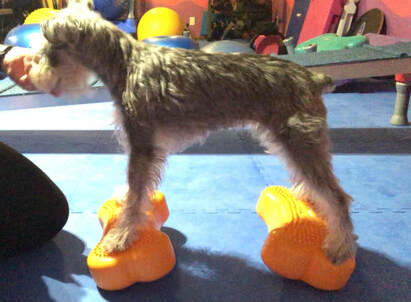 Over-inflated mini FitBones are more UNstable & require increased fitness Over-inflated mini FitBones are more UNstable & require increased fitness
Next, we worked more on our static stands. In the video, you will see static stands from 2-3-2021. The FitBones used were over inflated. When a FitPaws piece of equipment is OVER inflated it increases its difficulty, as it is more easily rolled. One important piece to note is that if your dog stands on a piece of fitness equipment and shakes uncontrollably STOP, just stop. They are not fit enough for that piece of equipment! This maybe they truly are not fit or they are guarding a stabilizing muscle. Regardless, get them off of it. If they shake, but within 2-3 seconds stabilize and stop shaking, they have engaged the needed muscles for stabilization. Keep the session short and sweet, as to not over work them.
Next, we worked on sprints. Nothing crazy, my room is only 24 feet (or so) long. I placed Rainey in a sit stay, lead out across the room, and called her to me. In this space she couldn’t get up a tremendous amount of speed, but she gets fast. I was actually assessing her push off from the stay, making sure she’s still pushing from her rear vs pulling from her front. I did not want her compensating for a weak core by not using her back legs. How would this happen? In dogs, a primary muscle for hip flexion, or bringing the hind leg forward, is the iliopsoas muscle. This muscle complex starts at around T10-12, follows the underside of the lumbar vertebrae, until it gets to the pelvis, where it splits and attaches to the lesser trochanter of the femur. The secondary function of this muscle is core and back strength and stabilization. Therefore, it can be assumed that if the core is not engaging, the iliopsoas is likely not performing to its full potential, and then the dog will not be properly flexing and extending its back legs, as they may be hunching their back and guarding their back/abdomen. This results in a shortening of the iliopsoas, which results in increased flexion and decreased extension of the hind leg, resulting in a choppy gait. Then after a while, as the dog continues to hunch its back, its core weakens, it stops engaging their core, the dog decreases their hip extension and push off, and with time the dog starts dragging itself forward with their front vs pushing from their rear. Assessing early on if the dogs normal running function is abnormal is important at catching something early before it has a chance to progress. 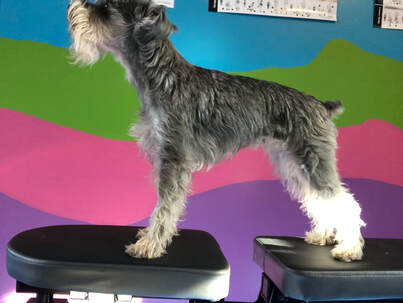 Rainey is continuing to improve in her topline Rainey is continuing to improve in her topline
We continued to work on shoulder exercises by performing a lateral side step with an elevation. You will notice watching the video that I used a different pair of mini FitBones. This pair is not over inflated. This makes them more stable and decreases their difficulty. For this exercise I did not want to insert another complicated factor, as the technique is already complicated. The goal of this exercise is to keep hind feet still while walking laterally (to the side) with front feet, stepping off the FitBone, and back on. This is difficult and likely more complex than she should be doing right now, but again I wanted to see where we were at. This exercise engages the core as a stabilizer, allowing the dog to step down and back up, while utilizing the abductor/adductors of the forelimb. This is definitely not an exercise for a lower physical fitness athletic with weak forelimb stabilizer muscles. Rainey did very well, and maybe became overly excited.
Side steps on the flat are next in the video. The important element with this exercise is trying to keep the head in neutral position (difficult with small dogs). Next, the goal is for the dog to actually cross their front feet and their back feet as the step sideways. In the video, Rainey is almost shuffling sideways, with some points she will actually crisscross her legs. She was very excited, and we had not performed these in a long time. Another project to work on! Again, this exercise focuses on hind limb and forelimb abduction/adduction, but in order to stay straight sideways, the dog must stabilize their core.
This week we returned to the land treadmill! The focus was a slow 2 minute warm up, followed by 3 minutes at a faster pace, with the goal being improving her cardiovascular fitness. With the weather currently being below 0 in Minnesota, we are not able to do this outside. However, Rainey thoroughly enjoys her treadmill! As the weeks progress I hope to work up to more HIIT training at 90 to 120 second intervals, which will aid in training her cardiovascular fitness for agility.
This week Rainey was able to return to something that resembled agility and training – wraps! I went down this path for three reasons – 1. To assist her mental stimulation and joy for training, 2. To assess her ability to control herself at speed, and 3. Continue improving her spine flexibility. I would say I am happy with her progress. The last technical exercise of the week was a ‘Sit to down to sit’. This exercise requires a stronger core, and the ultimate goal is for the dog to ‘pop’ to a sit and ‘pop’ to a down. This means no walking with their feet. Initially, Rainey wanted her cookie, and did a half-effort down to sit. You will see that I correct her by luring her head to a higher seated position. This looks like I was trying for a sit pretty, and I can assure you I was not. Then after that first attempt, Rainey performs the sequence with better effort. She is still walking her feet slightly for the down to sit, but overall, her performance is pretty good! This week we complicated our cavelletti’s by placing the bars at apposing angles. This further challenged Rainey’s proprioceptive input (the ability and speed at which her eyes communicated with her limbs and her brain telling them what to do when and where). As you can see in the video Rainey struggled a little bit to this challenge, which as with everything she does, was at speed. I wanted to continue the lovely patterned gait, but with increased complexity. Having a quick reaction time is important in the jobs Rainey performs (agility). Lastly, Rainey finished the week out with scent work practice, at which she excelled!
And there we have it – all of Rainey’s exercises for the week plus some anatomical reasons why I chose these exercises. This week, I increased complexity and started to push Rainey past her comfort zone. She continued to exceed my expectations, especially as her willingness and love to train returns. It will be soon that Rainey returns to class at low jumps, as we continue to rebuild her core and overall strength. Next week I hope to write about her diet and expand on any new exercises we perform, and in the future, I do plan to expand on laser therapy, the Assisi Loop, and Tui-na massage. I also discovered that I would like to go more in-depth on anatomy and why things matter or why we recommend what we do for our sport dogs.
The road to recovery is long, and sometimes there are setbacks, but the time it takes to get there will always be worth it! Take care and may the Qi flow freely for you! Dr. Shantel Julius, DVM, CCRP, CVA, fCoAC, CVSMT, CVFT, CVTP, CVCH, CTCVMP References: Xie, H., Preast, V. Xie’s Chinese Veterinary Herbology, 1st Edition. Wiley-Blackwell, 2010. Millis, D., Levine, D. Canine Rehabilitation and Physical Therapy, 2nd Edition. Elsevier. 2014. Evans, H.E., deLahunta, A. Guide to the Dissection of the Dog, 6th Edition. Saunders. 2004. |
AuthorDr. Shantel Julius, DVM Archives
April 2021
Categories |
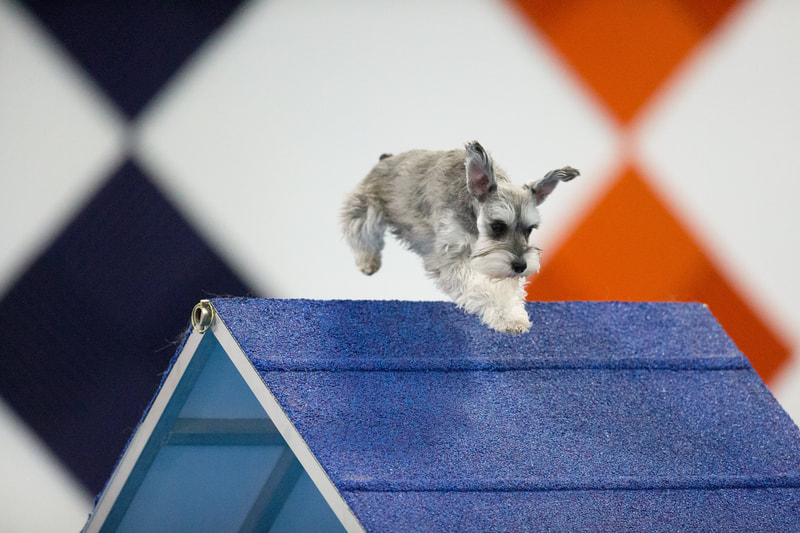
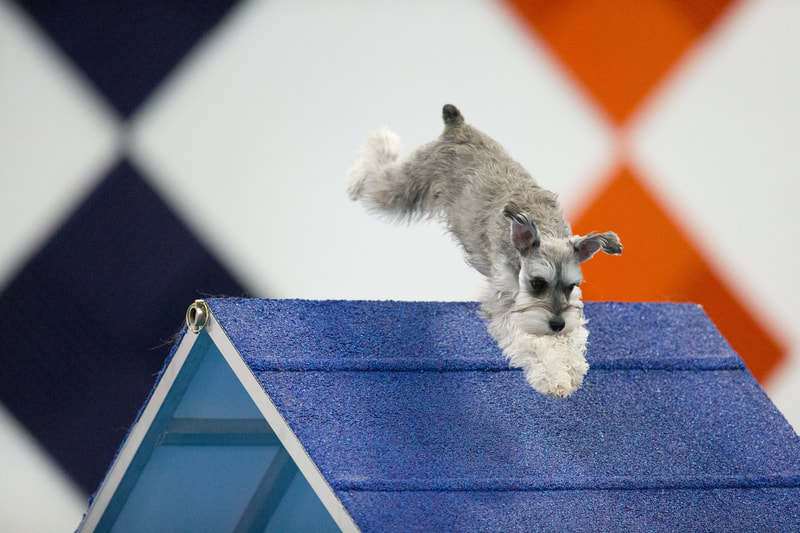
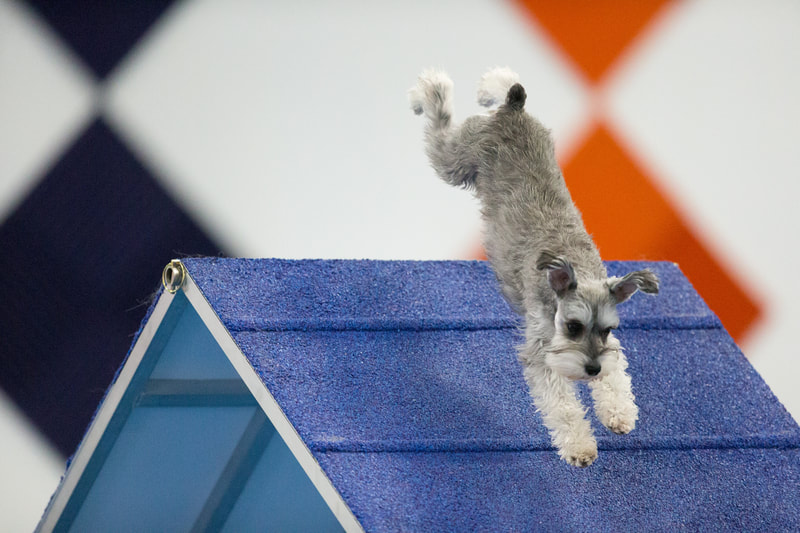
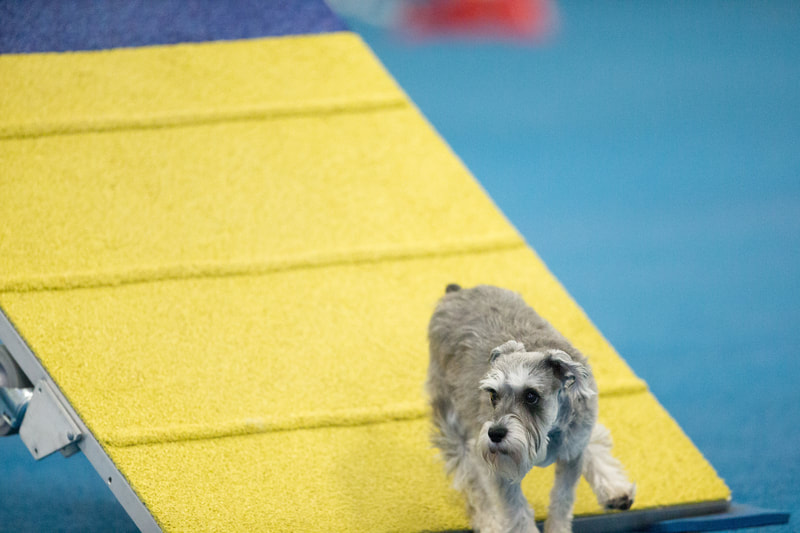
 RSS Feed
RSS Feed